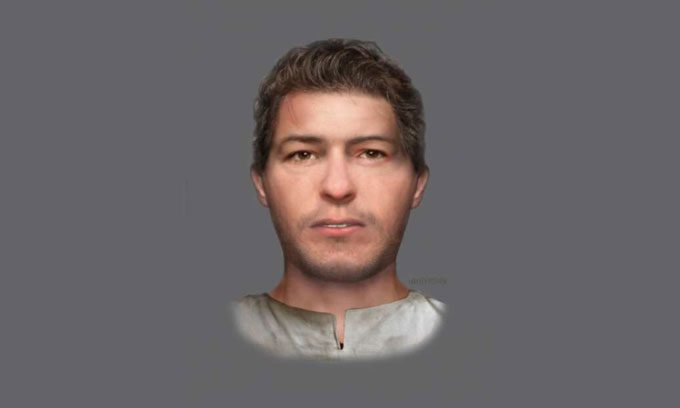The Medieval Man Buried with 13 Other Remains Not Related by Family, Believed to Have Been Well-Connected and of High Social Status.
Archaeologists have conducted a detailed study of the remains of a man buried alongside five children and eight other adults in a Roman fort at Cramond, near Edinburgh, Scotland. These remains were found in a latrine used by Roman soldiers during their occupation of Scotland centuries ago. The new research was published in the journal Archaeological and Anthropological Sciences on March 24.

Reconstructed face of the man from Loch Lomond to Cramond who died in the 6th century. (Photo: University of Aberdeen)
The 14 remains were first discovered in 1975. At that time, scientists believed they lived in the 14th century, possibly victims of the Black Death. However, modern carbon dating methods show that they lived in the 6th century, a time of chaos and many mysteries in England’s history.
Isotope analysis of the teeth provides valuable information about the lives of these individuals in the past, including their diet and geographical origins.
“The food and water that a person consumes leave a unique mark in the body, which can trace back to their origins, diet, and places they have been. Tooth enamel, especially from teeth that formed during the ages of 3 to 6, acts like a ‘time capsule’ preserving chemical information about where that person grew up,” said Professor Kate Britton, a member of the research team and an archaeologist at the University of Aberdeen.
Previously, experts had assumed that the man and those buried in the Roman fort at Cramond were a family. However, new analytical results indicate that among them, six individuals were born and raised in Cramond, while one woman came from the west coast.
The man was not related to them but grew up in the Loch Lomond area and later moved to Cramond, which was once a significant political center attracting well-connected individuals during a time of chaos in Scotland. Scientists have reconstructed his face and referred to him as the “Medieval Wanderer.”
The new study reveals that migration in early medieval Scotland was much more common than previously thought. “It is often assumed that travel during this period would be restricted due to the lack of roads as we know them today and political issues. The analysis of the skeletal group in Cramond, along with other early medieval burial sites in Scotland, shows that being buried far from where one grew up was not unusual,” said Dr. Orsolya Czére, the lead author of the study.
“Previous studies indicated that those buried here held high social status, even nobility. Our new analysis shows they were well-connected individuals who traveled extensively,” Czére added.
This migration may have led to new cultural developments, gene exchanges, and even intense social conflicts. Some individuals buried in the latrine likely suffered a horrific death. Scientists discovered evidence suggesting that a woman and a child appeared to have been struck violently on the head with a blunt object, possibly the head of a spear.


















































